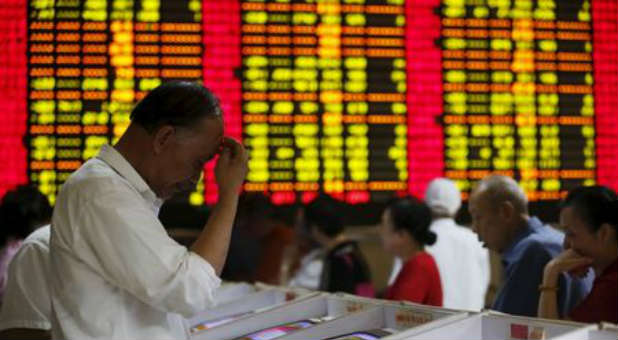The Stock Markets of the 10 Largest Global Economies Are All Crashing
You would think that the simultaneous crashing of all of the largest stock markets around the world would be very big news. But so far, mainstream media in the United States are treating it like it isn’t really a big deal.
Over the last 60 days, we have witnessed the most significant global stock market decline since fall 2008, and yet most people still seem to think that this is just a temporary “bump in the road” and that the bull market will soon resume. Hopefully they are right.
When the Dow Jones Industrial Average plummeted 777 points on Sept. 29, 2008, everyone freaked out, and rightly so. But a stock market crash doesn’t have to be limited to a single day. Since the peak of the market earlier this year, the Dow is down almost three times as much as that 777-point crash back in 2008.
Over the last 60 days, we have seen the eighth-largest and 10th-largest single-day stock market crash in U.S. history on a point basis. You would think that this would be enough to wake people up, but most Americans still don’t seem very alarmed. And of course what has happened to U.S. stocks so far is quite mild compared to what has been going on in the rest of the world.
Right now, stock market wealth is being wiped out all over the planet, and none of the largest global economies have been exempt from this. The following is a summary of what we have seen in recent days:
1. The United States—The Dow Jones Industrial Average is down more than 2,000 points since the peak of the market. Last month we saw stocks decline by more than 500 points on consecutive trading days for the first time ever, and there has not been this much turmoil in U.S. markets since fall 2008.
2. China—The Shanghai Composite Index has plummeted nearly 40 percent since hitting a peak earlier this year. The Chinese economy is steadily slowing down, and we just learned that China’s manufacturing index has hit a 78-month low.
3. Japan—The Nikkei has experienced extremely violent moves recently, and it is now down more than 3000 points from the peak that was hit earlier in 2015. The Japanese economy and the Japanese financial system are both basket cases at this point, and it isn’t going to take much to push Japan into a full-blown financial collapse.
4. Germany—Almost one-fourth of the value of German stocks has already been wiped out, and this crash threatens to get much worse. The Volkswagen emissions scandal is making headlines all over the globe, and don’t forget to watch for massive trouble at Germany’s biggest bank.
5. The United Kingdom—British stocks are down about 16 percent from the peak of the market, and the U.K. economy is definitely on shaky ground.
6. France—French stocks have declined nearly 18 percent, and it has become exceedingly apparent that France is on the exact same path that Greece has already gone down.
7. Brazil—Brazil is the epicenter of the South American financial crisis of 2015. Stocks in Brazil have plunged more than 12,000 points since the peak, and the nation has already officially entered a new recession.
8. Italy—Watch Italy. Italian stocks are already down 15 percent. Look for the Italian economy to make very big headlines in the months ahead.
9. India—Stocks in India have now dropped close to 4,000 points, and analysts are deeply concerned about this major exporting nation as global trade continues to contract.
10. Russia—Even though the price of oil has crashed, Russia is actually doing better than almost everyone else on this list. Russian stocks have fallen by about 10 percent so far, and if the price of oil stays this low, the Russian financial system will continue to suffer.
What we are witnessing now is the continuation of a cycle of financial downturns that has happened every seven years. The following is a summary of how this cycle has played out over the past 50 years:
- It started in 1966 with a 20 percent stock market crash.
- Seven years later, the market lost another 45 percent (1973-74).
- Seven years later was the beginning of the “hard recession” (1980).
- Seven years later was the Black Monday crash of 1987.
- Seven years later was the bond market crash of 1994.
- Seven years later was 9/11 and the 2001 tech bubble collapse.
- Seven years later was the 2008 global financial collapse.
- 2015: What’s next?














































